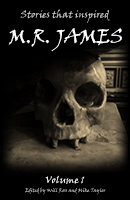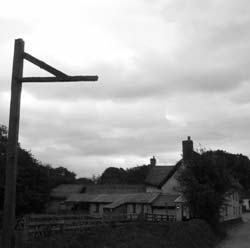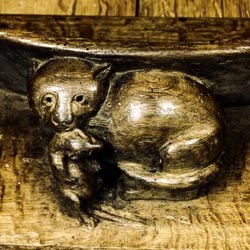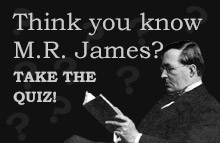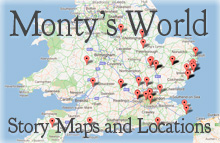Episode 15 – Mr Humphreys and his Interitance
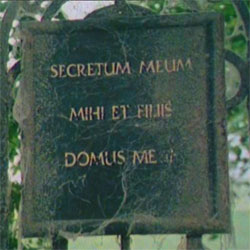 This episode Mike and Will get hopelessly lost in ‘Mr Humphreys and his Inheritance’. It’s a-maze-ing!
This episode Mike and Will get hopelessly lost in ‘Mr Humphreys and his Inheritance’. It’s a-maze-ing!
Show notes:
- Two Ghosts & Scholars Essays
We referred extensively to two outstanding examinations of the symbolism and antiquarian lore behind the story: Martin Hughes’, “A Maze of Secrets in a Story by M.R. James“, reprinted in Warnings to the Curious and “James Wilson’s Secret”, by Rosemary Pardoe and Jane Nicholls. Both well worth a read. - Mr Humphreys and his Inheritance (TV Version)
This story was adapted in an abridged form for the ITV schools programme ‘Music Scene’ in the 1970’s. A very low quality rip is available on YouTube but we recommend you invest in the DVD of Casting the Runes which features a much higher quality version as an extra.
- Wilsthorpe (GoogleMaps)
There are two real Wilsthorpes, one in Lincolnshire and the other in Yorkshire but there is no solid evidence that M.R. James was thinking of either when writing the story. - Possible Maze Inspirations
James new Suffolk and it’s stately homes like the back of his hand. With his in mind, could the yew maze in this story have been inspired by the similar yew maze at Somerleyton Hall, Suffolk, designed and planted in 1846? Like Wilsthorpe hall, the grounds have various classical/Italian features, including an globe-shaped equatorial sundial (decorated with astrological symbols) which reminds us of the globe in ‘Mr Humphreys…’.
Rosemary Pardoe and Jane Nicholls speculate that the turf labyrinth at Hilton, Cambridgeshire may also have provided inspiration. It dates from the 17th century and would have certainly been known to James due to it’s close proximity to Cambride. It also features a central pillar at the centre, with a globe and an inscription in latin, that commemorates the death of the mazes creator William Sparrow (1641–1729). - Mazes (Wikipedia)
Wikipedia features useful introductions to both hedge mazes and mazes in general, including a list of notable mazes. - Marjery Wardrop (Wikipedia)
During this episode Will speculates that James’s choice of ‘Wardrop’ as a name may have been inspired by his contemporary folklorist Marjery Wardrop. - Labyrinth (1986)
The mad-as-a-bag-of-ferrets maze-fest much loved by Mike, starring David Bowie’s crotch. It’s like ‘Alive in Wonderland’, but with added muppets and musical numbers. Watch the trailer on YouTube or chech out the bonkers Magic Dance Sequence. And if you enjoyed that, why not check out the Top 10 Mazes in Films, although they miss out Will’s personal favourite Cube.
Podcast: Play in new window | Download
Subscribe: RSS

